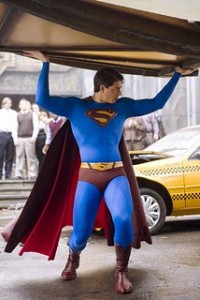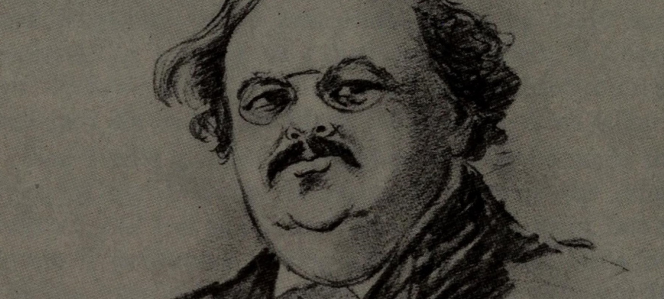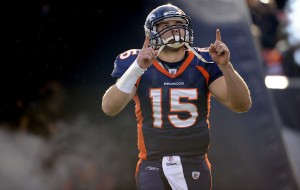 In light of my interview with Salt and Light TV tomorrow on superheroes and the faith (I’ll let you know when it airs), I thought I’d post my 2006 Superman article, published in Catholic Insight magazine, dealing with the release of the film, “Superman Returns”. You can also find my two-part article on the Batman film “The Dark Knight” in the archives here and here !
In light of my interview with Salt and Light TV tomorrow on superheroes and the faith (I’ll let you know when it airs), I thought I’d post my 2006 Superman article, published in Catholic Insight magazine, dealing with the release of the film, “Superman Returns”. You can also find my two-part article on the Batman film “The Dark Knight” in the archives here and here !
The Gospel According to Superman
by Cale Clarke
As a lifelong fan of comic book superheroes, I couldn’t wait for the latest installment of the long-dormant Superman movie franchise, Superman Returns, to swoop into theatres. And as a Catholic, watching the movie gave me more than I bargained for. I was looking for a little escapist fantasy. Instead, I found my thoughts soaring “up, up, and away”–as Superman would say-into the very heart of reality, heaven itself.
Why heaven? Because Jesus Christ is there. And Superman Returns draws some very interesting parallels between the Messiah and the Man of Steel. Just as St. Paul in Acts 17 used the works of Greek “pop culture” artists – namely, pagan poets Epimenides, Aratus, and Cleanthes – to draw first-century Athenians to Christ, there may be aspects of this movie that can connect modern spiritual seekers to the Saviour. To communicate the Gospel effectively today, we must, as St. Paul did, exegete the culture as well as the Scriptures.
Superman was created 70 years ago by Jewish teens Jerry Siegel and Joe Shuster (a Canadian!). No doubt they were thinking more of the original Moses than the new Moses (Jesus) when they dreamed up their iconic character, but the allusion to Moses is unmistakable in the Superman story. As their home planet, Krypton, is destroyed, Jor-El and his wife Lara set their infant son Kal-El adrift, not on the river Nile, but into outer space, in the hopes that a good family on Earth will raise their son as one of their own, even though he is truly a king. Of course, Jonathan and Martha Kent did just that in Smallville, Kansas, naming the boy Clark, Superman’s alter-ego.
Although the Superman legend springs from Jewish roots, just as Christianity itself does, the creators of Superman Returns have made their own mark on the character–a mark that looks an awful lot like the cross. Superman film directors like Richard Donner (1978’s Superman: the Movie) and Superman Returns’ director Bryan Singer chose to portray Superman as a Christ figure. The “S” on Superman’s chest might just as well stand for “Savior.” Singer acknowledged as much in a recent interview with Wizard magazine: “Superman is the Jesus Christ of superheroes.”
Obviously, Superman is a myth; Christ is a historical person, “born of the Virgin Mary …(Who) suffered under Pontius Pilate.” Superman is not Christ. But he is a Christlike figure, as we all should be. What we are dealing with is more of an allusion to Christ (a la Tolkien’s The Lord of the Rings), rather than a straight Christian allegory like C.S. Lewis’ Narnia series, where Aslan = Christ. But Superman Returns’ Christian allusions are no illusion.
Consider: Superman is sent to earth as a baby in a rocket ship shaped like a star, which lands in a rural cornfield. Christ’s arrival was also heralded by a star seen by shepherds in a field. Superman is raised on earth in a “backwater” town reminiscent of Nazareth: Smallville. Like Christ, Superman grows up where people have no idea of the powers he possesses, or what his true
identity – hiss true nature, a Catholic might say – really is.
Jesus was raised by an earthly stepfather named Joseph, a carpenter. Clark (which, incidentally, means “cleric”) was also raised by a manual labourer, farmer Jonathan Kent. Ironically, Clark’s parents were originally named Mary and Joseph in the comics, but later were changed to Martha and Jonathan. Superman’s Kryptonian father, Jor-El, sends Kal-El to earth with these words in Superman Returns: “They can be a great people, Kal-El; they wish to be. They only lack the light to show them the way. That is why I have sent them you, my only son.”
If this does not evoke echoes of John’s gospel, I don’t know what does! Jesus is “the light of the world” (John 1:4,5,9; 8:12) and God’s one and only Son (John 3:16,18). The early Church’s members were first called members of “the Way” (Acts 9:2). Jesus Himself said, “I am the way, the truth, and the life” (John 14:6).
Interestingly, “El” is Hebrew for God, which may or may not have had some significance in the creation of the Kryptonian names of Superman and his father. El the father and El the son evoke the Trinity, as does the line repeated by Jor-El and Superman in Superman Returns, “The son becomes the father, and the father, the son.” Jesus said to Philip: “Anyone who has seen me has seen the Father” (John 14:9).
Superman hovers above earth and listens, via his super-hearing, to myriad cries for help from below. This scene echoes what he will later tell Lois: “You said the world doesn’t need a saviour. But every day, I hear people crying for one.” Superman answers those cries, flying to the rescue, faster than a speeding bullet, breaking the sound barrier with a boom. This recalls Christ’s hearing our prayers on earth. His response is even faster than Superman’s. God “is an ever-present help in trouble” (Psalm 46:1).
Superman’s mortal enemy is Lex Luthor: a name that phonetically evokes that of Lucifer. Luthor is insanely jealous of Superman’s powers, just as Lucifer was of God. There is a scene where Superman, weakened by Kryptonite, is savagely beaten by Luthor and his thugs. The violence is raw and very reminiscent of The Passion of the Christ. Seeing Superman stripped of his powers and thrashed reminds one of Jesus, holding back His great power, brutalized by the people he came to save. Superman is then stabbed in the side by Luthor with a shard of Kryptonite, an unmistakable allusion to the lance which pierced the heart of Christ on the cross.
Luthor’s gal pal Kitty Kowalski calls to mind Pontius Pilate’s wife Claudia, who tells Pilate not to harm Jesus, having been warned in a dream. Kitty is visibly disturbed during Superman’s beating, and later throws away Kryptonian Crystals possessed by Lex, which had given him the edge in his battle against Superman.
Just as Christ did away with sin through His death, burial, and resurrection, Superman, after saving earth, falls (in a cruciform
pose) from space to earth, where his impact “buries” him in a crater, seemingly dead. Is this the end for Superman? Not if Warner Brothers wants another sequel!
Much more can be said, more than we have space for here. Of course, the comparisons between Superman and Christ end when it comes down to the main surprise of the film (caution: spoiler ahead!): Superman has fathered a child out of wedlock with Lois Lane. No allusion to Christ here; Jesus was celibate and fathered no children, no matter what Dan Brown says.
Superman’s son, Jason, was conceived by Superman and Lois’ illicit union in Superman II. As a lifelong Superman fan, this is one development of his onscreen mythology that I have a huge problem with. Superman was always known for his moral purity; filmmakers Donner and Singer have taken far too much licence here, in a misguided attempt to make Superman “relatable” to modern viewers.
But they forget that what attracts us to the character of Superman is, well, his character, as well as his saving powers. He is to, as Jor-El intones in the film, “inspire others to moral good.” And what people are attracted to in Superman–the qualities and powers of a saviour–can only be found in the reality of Christ, the true Super Man.
In the movie, Superman returns after a long disappearance. We, too, are waiting for our hero, Jesus, to return in glory. However, as Catholics, we are not asking Our Lord, as Lois does of Superman after his long absence, “How could you leave us like that?” We always have Christ’s Real Presence in the Eucharist, where He never leaves us or forsakes us. “I am with you always” (Matt. 28: 20).
Really, we can all identify a lot with Superman, because we are all aliens of a sort. This world is not our home, but “our citizenship is in heaven. And we eagerly await a saviour from there”–no, not Superman–“the Lord Jesus Christ, who … will transform our lowly bodies so that they will be like his glorious body” (Phil 3:20-21). When He returns, we will all be Super.





 In light of my interview with Salt and Light TV tomorrow on superheroes and the faith (I’ll let you know when it airs), I thought I’d post my 2006 Superman article, published in Catholic Insight magazine, dealing with the release of the film, “Superman Returns”. You can also find my two-part article on the Batman film “The Dark Knight” in the archives
In light of my interview with Salt and Light TV tomorrow on superheroes and the faith (I’ll let you know when it airs), I thought I’d post my 2006 Superman article, published in Catholic Insight magazine, dealing with the release of the film, “Superman Returns”. You can also find my two-part article on the Batman film “The Dark Knight” in the archives